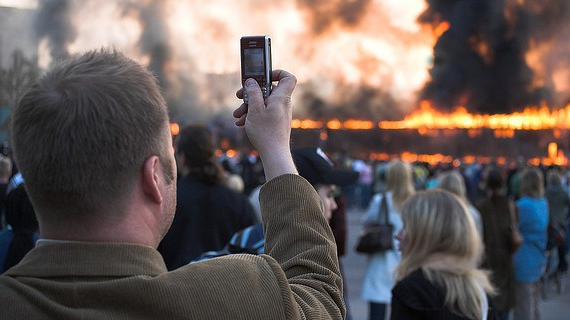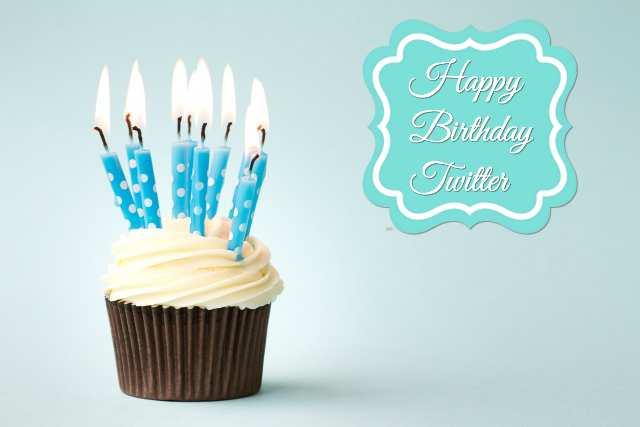Do you remember what life was like some 10 years ago, before the marvelous technology innovation that is Twitter burst onto the scene?
The number sign (or pound or hash symbol) was still a year away from being reinvented as the hashtag. A “tweet” was the sound a bird might make. People more frequently thought and wrote in sentences longer than 140 characters, without using words and acronyms like “ur”, “ICYMI”, and “RT”. Nobody cared what color #TheDress was.
Twitter is one of those once-in-a-lifetime developments that can truly be called “disruptive”, and its impact continues to resonate across every aspect of today’s always-on, hyperconnected world. Think about this: we now have an entire generation of people that don’t remember a world without Twitter.
Our world has fundamentally changed, thanks in part to the Twitter Effect. Twitter both amplifies and democratizes information, shrinking our world down to the speed of an Internet connection. It often serves as a bully pulpit, a personal soapbox, or comic relief. We use it to find a job, friends, or even romantic partners. It’s a catapult that can propel even the most mundane things to superstardom, if only for a few brief shining moments (#DrummondPuddleWatch, I’m lookin’ at you).
 From a business standpoint, brands live and die by their Twitter successes and failures. These days, a 14-year old kid with an opinion and a laptop can wield an incredible amount of influence. And we are all now part of the participatory citizen media – anyone with a smartphone and a data plan can become an on-the-scene reporter for breaking news, scooping traditional journalistic outlets with ease.
From a business standpoint, brands live and die by their Twitter successes and failures. These days, a 14-year old kid with an opinion and a laptop can wield an incredible amount of influence. And we are all now part of the participatory citizen media – anyone with a smartphone and a data plan can become an on-the-scene reporter for breaking news, scooping traditional journalistic outlets with ease.
In short, Twitter has fundamentally altered how we seek out, consume, and share information, as well as changing the very way we humans interact with one another. And although it has and continues to suffer from growing pains now that we’re 10 years down the road, the undeniable fact is that Twitter is here to stay. It may be entering that awkward teenage phase, but make no mistake: this is a platform that has legs.
So, the question now isn’t so much “Are you on Twitter?” as it is, “Why aren’t you on Twitter?” As a de facto communications channel, there’s an expectation that you or your organization will be there. Therefore, if you’re not investing time and energy in Twitter, you’re missing out on key opportunities. Because the Twitterverse is ginormous, the thought of diving right in can be intimidating. But, not to worry; getting started is easier than you think.
Interprose has a free, easy-to-follow practical guide that walks you through the basics of getting your account up and running. Download it, follow the instructions inside, and in no time at all, you’ll be on your way to Twitter fame and glory.
And in the meantime, in honor of its 10th birthday, here are a few fun facts:
- If Katy Perry was a country and her followers were her citizens, she’d be the 16th most-populated country on Earth, ahead of Germany.
- The Twitter bird’s name is…Larry. Twitter confirmed that he’s named for basketball legend Larry Bird.
- The average user spends approximately 170 minutes (or, 4.5 hours) per month on Twitter.
- Twitter was almost called “Friendstalker”. Seriously.
- Twitter founder Jack Dorsey first unveiled his idea for Twitter on a slide at a playground, like a “geeked out Moses on Mount Sinai”, reported the New York Times.
- Every week, Sweden hands control of its official Twitter account over to a different citizen.
- Pope Francis once set the world…well, atwitter with by offering reduced time in purgatory by following a particular Twitter account, according to The Guardian.
- The FBI maintains an 83-page handbook of Twitter terminology and slang.
- The CIA may or may not read up to five million tweets per day. It also may or may not call its social media manager “Khaleesi”.
- A Chicago University study found that Twitter could be more addicting that cigarettes or alcohol.

